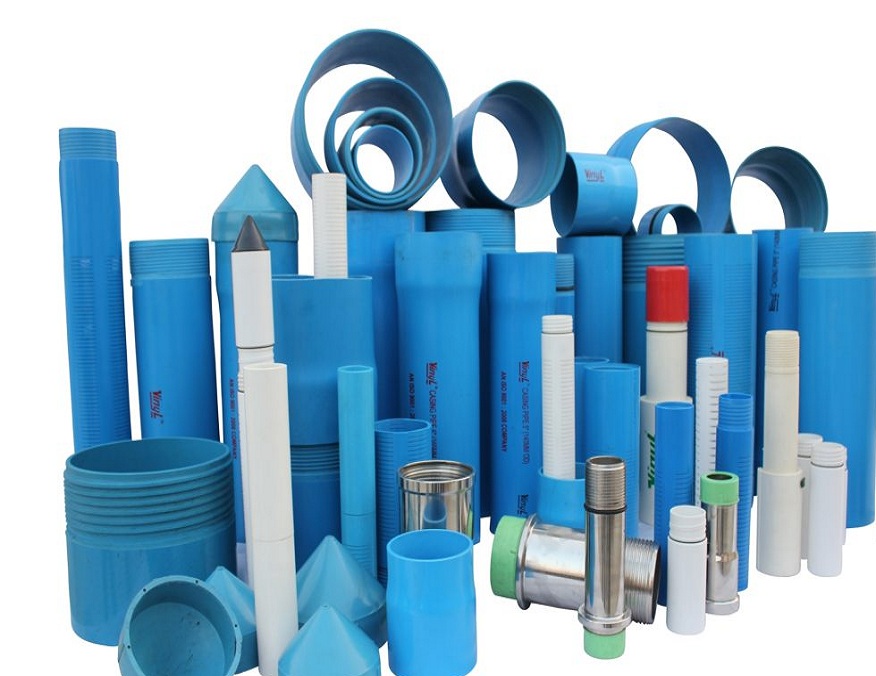Introduction:
Suspension-grade PVC is available primarily in the K-57 and K-67 varieties. This is because these two grades are the most commercially used grades by PVC converters. K-57 resin is used for calendering U-PVC sheets and injection molded fittings, while K-67 resin is used for rigid PVC pipes, profiles, and sheets.
The higher the K value, the higher the porosity. Therefore, resins with K values of K-67 and above are used for flexible PVC applications.
K-57 grade resin is commonly used for injection molding. Due to their shorter chain length (molecular weight), they are less viscous than resins with higher K values. It has a higher mold swell than K-67 resin, promoting mold filling and gloss transfer from the mold surface to the product. Die to swell and spatter can be further treated with the addition of processing aids.
Resins with lower K values have lower crystallinity than resins with higher K values.
However, the difference in tensile strength and elastic modulus is negligible.
According to IS 7834:2003, the thickness of his PVC fittings for all pressure pipes should be at least 3 mm. This means that 90 x 0.8MPa pipe has a minimum gauge of 4mm and 90 x 1.0MPa pipe has a minimum gauge of 5.7mm, but fitting manufacturers require a minimum gauge of 3mm for all rated pressure pipes. create. This aspect should be clearly specified in the ISO 7834 standard. Otherwise, it just means that the weld must be within the optimal range for a 3mm thick fitting.
Due to the lower diffusivity, melting in K 67 resin is relatively more difficult than in K 57 resin.
The gloss of K-67 resin is also lower than that of K-57 resin, and the processing temperature is not desirable for injection molding due to greater shear in the mold, spraying, silver streaks, and degradation.
Higher processing temperatures not only cause degradation but also require longer cooling times to cool the part. Some people use it to put the product in cold water. This prevents crystallization and reduces VST. (annealing improves thermal and certain mechanical properties)
Considerations for injection molding viscosity:
In the injection molding process, the flux PVC’s consistency must be such that it can be easily injected through the nozzle and sprue bushing into the mold cavity.
K-57 PVC has a lower viscosity than K-67 resin and meets this requirement.
Based on published information, K-55 resin is ideal for injection molded fittings. However, it is rarely available and expensive. K-57 resin is therefore the best compromise. K-60 resin is also sometimes used under the guise of better mechanical properties if the cost is lower or K-57 resin is not available.
K value and viscosity:
When you purchase K-57 resin, the inspection certificate states that the resin has a K value of 57 +/- 1.
We blindly accept it and cannot relate it to real problems in production.
In fact, when you buy K-57 resin, you get PVC with a K value between 55.6 (rounded up to 56) and 58.4 (rounded up to 58). How important is it?
It is well known that for polymers, viscosity is proportional to molecular weight ^3.4.
Since the K value is a measure of the polymerization degree of PVC, it can be said that the viscosity is α(K value)^3.4.
So if the K value is 55.6, the viscosity is α(55.6)^3.4, And With a K value of 58.4, the viscosity is α(58.4)^3.4.
This corresponds to a viscosity change of approximately 18%. So, despite purchasing PVC resin from the same supplier and test reports of a K value of 57+/-1, processing issues were found and the lubricant, especially the polar (internal) lubricant, had to be adjusted. there is. What happens when you use K-67 resin?
The key to consistent processing is having the QA lab determine the actual K value for the input PVC. Experiments should then be performed to determine the level of lubrication required for resins with different K values, and this data should be used in formulations to achieve smooth processing. This means that instead of changing the processing parameters for input connection changes, you can change the input connection and ensure that the process parameters (processing window) remain the same. This saves a lot of operator effort.
K value and VST:
The glass transition temperature of amorphous polymers is a function of molecular weight
The relationship is expressed as Tg = Tg(inf) – C1 / Xn^0.666
Where
- Xn – is the chain length of the polymer.
- C1 – is a constant
- Tg (inf) – glass transition temperature of infinite chain polymer
For PVC, C1 = 508 and Tg (inf) = 356 °K. [356 – 273 = 83°C]
Considering the chain length or degree of polymerization of K-57 resin = 750 monomer units and the chain length or degree of polymerization of K-67 resin = 1000 monomer units,
For K-57 resin, Tg = 356 – 506/750^0.666 = 349.81 °K, and For K-67 resin, Tg = 356 – 506/1000^0.666 = 350.89 °K
Therefore, the theoretical difference in softening point or Tg between K-57 and K-67 resins is 350.9°K – 349.8°K = (350.9 – 273) – (349.81 – 273)°C = 1°C.
However, since lubricants are added to K-67 resin to reduce its viscosity and make it injectable, there is little real difference.
Does that mean you can’t make metal fittings with K-67 resin?
It can be produced, but because it requires higher temperatures, more anti-degradant is needed to avoid the onset of degradation. Suitable lubricants, especially polar lubricants, are necessary to reduce viscosity and frictional heat. Due to the high temperature and viscosity, a large nozzle diameter is required. During cooling, more heat needs to be dissipated, resulting in longer cycle times. Therefore, for the best possible processing and the best possible mechanical and thermal properties, K-57 resin is the best solution.

